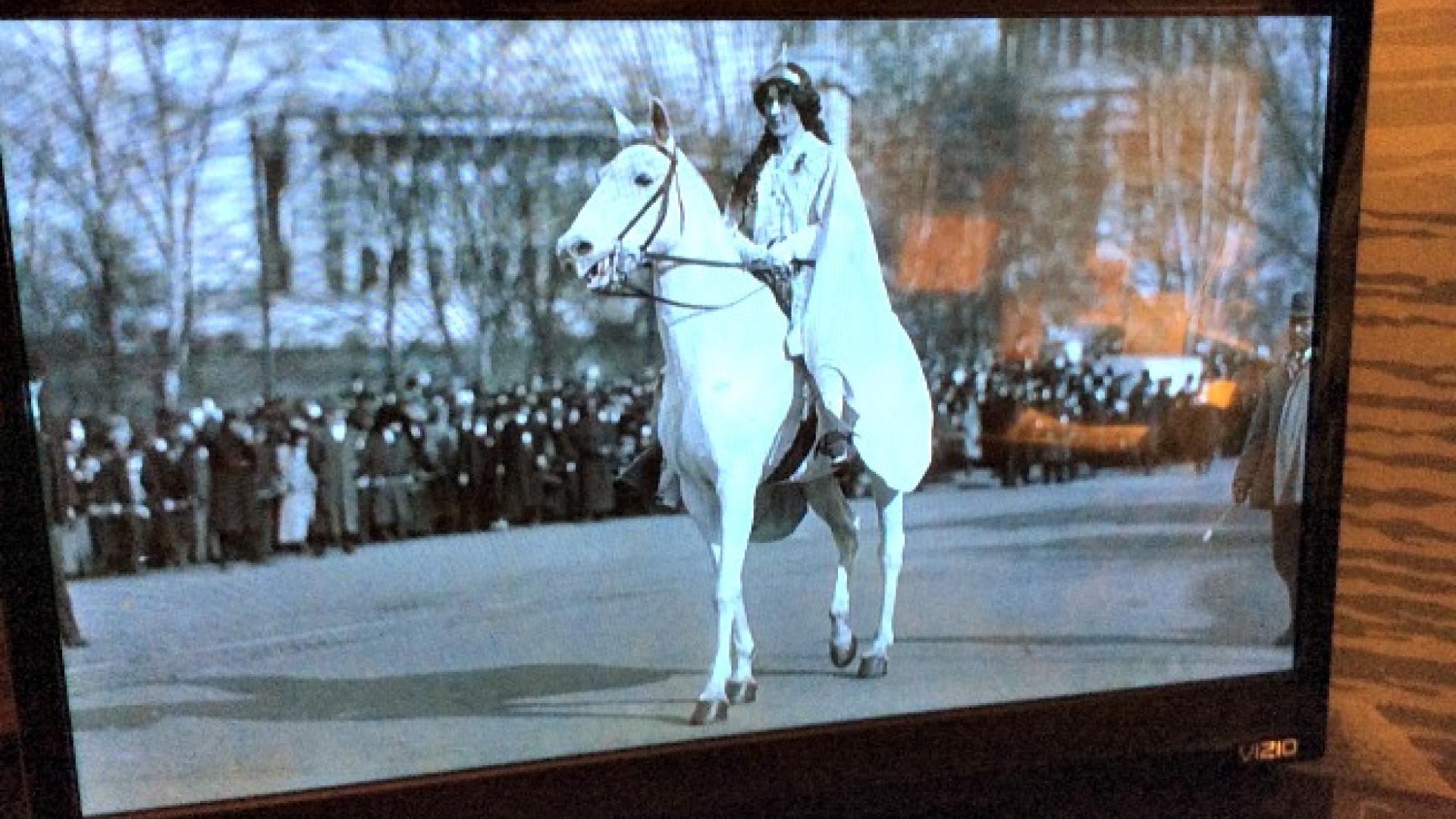The Hancock House was the setting for a talk with the theme "Adirondack Suffragists: 100 Years of Votes for Women." Both Hancock House-Ticonderoga Historical Museum and the Adirondack History Museum in Elizabethtown will be celebrating the centennial of women's suffrage with new exhibits.
Wait, wasn't the 19th Amendment passed in 1920? Yes, nationally, it was. But New York state gave women the right to vote three years earlier. The women of New York were important figures in the fight for women's suffrage, and Adirondack women were among their leaders.
This is why New York's Suffragette Centennial is this year, 2017.
A long fight
After all, it started in New York. The first women's rights convention was in Seneca Falls, New York; now known as the Seneca Falls Convention. Taking place on July 19 and 20 in 1848, it was declared "a convention to discuss the social, civil, and religious condition and rights of woman."
Women's suffrage was actually the subject of heated debate over its inclusion in the convention's Declaration of Sentiments, but once it was declared it became a rallying cry, and a hotly debated talking point among the men, and women, who lined up on either side.
The presenter of the night's talk, Essex County Historian Diane O'Connor, certainly threw herself into the subject.
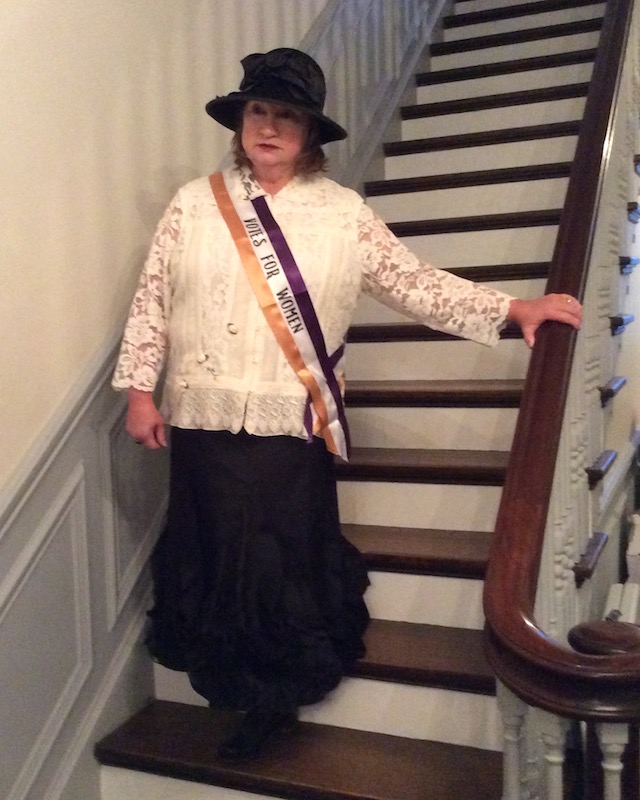
The "Votes for Women" talk highlighted some little-known facts about the fascinating history of this equality struggle. Then I was among the first people to view the new exhibit on the third floor. The displays surprised me with the many ways this movement expressed itself.
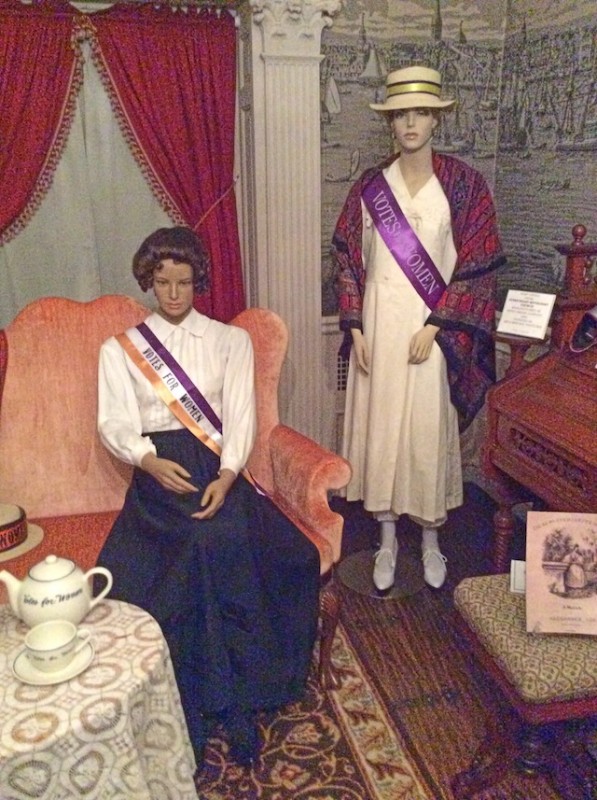
One thing I had not known was how this political stance became a factor in admitting new states to the Union. After the suffragettes lost a Supreme Court case in 1875, they focused on winning the vote for women on a state-by-state basis.
They succeeded in Wyoming (then a territory) in 1869, in Utah in 1870, Colorado in 1893, and Idaho in 1896. Granting such rights was seen as a lure to bring women to the West, and also increased their total voting population.
Woven into daily life
The new century brought great changes and increased suffragette activity. In the 1890s, the popularity of bicycles gave women new mobility and new clothing styles to fit these activities. Susan B. Anthony declared bicycles had "done more to emancipate women than anything else in the world."
This new spirit of freedom invigorated the movement. The National American Woman Suffrage Association held a convention in 1900 and a youthful attendee, Maud Wood Park, noticed the lack of active young women. She formed the College Equal Suffrage League, which affiliated with the NAWSA, and led to the organization of student chapters on college campuses in 30 states. By 1908, this became the National College Equal Suffrage League. The ladies of Britain formed a militant wing with dramatic tactics, which inspired the women of the United States to hold suffrage parades, with as many as 25,000 marchers.
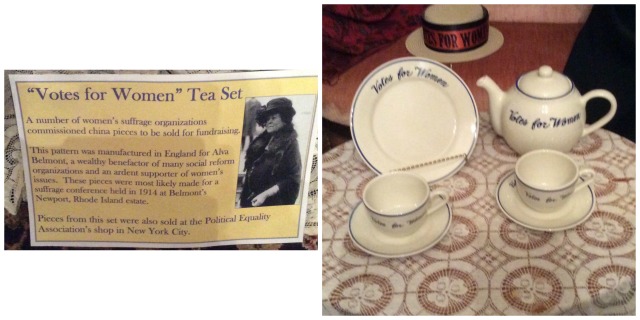
Merchandising for the cause was in full swing. There were tea sets, sheet music, hats, and all kinds of cooking and household goods with the women's suffrage theme.
In 1916 two suffragettes, along with their mascot, a black kitten named Saxon, set out on a five-month cross-country road trip from New York to Portland. I was intrigued by the mention of this publicity tour in Diane O'Connor's talk, and looked it up later. They were sponsored by the National American Woman Suffrage Association (NAWSA).
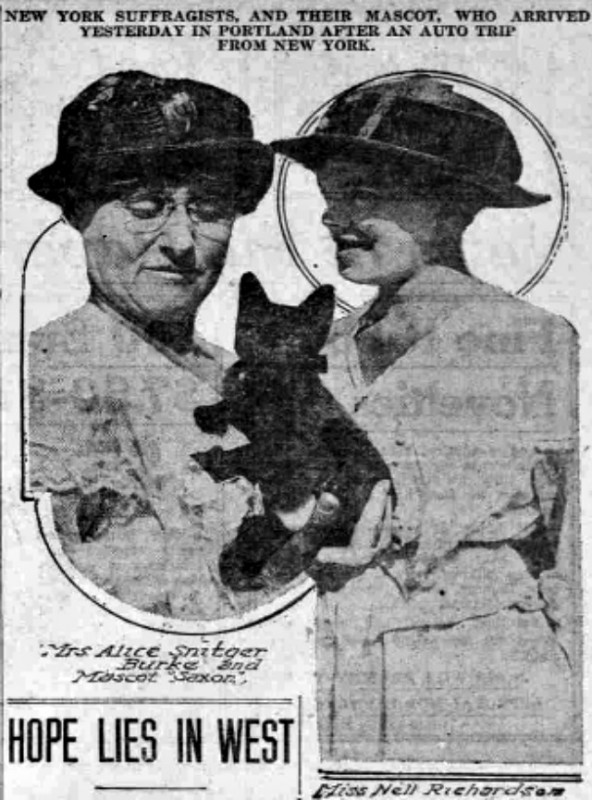
This was a daunting quest for anyone when roads were mostly dirt and cars broke down regularly, but especially so for a time when few women could drive cars at all. Nell Richardson and Alice Burke (and Saxon) managed over 10,000 miles, stopping at New Orleans, Los Angeles, San Francisco, Seattle, Minneapolis, Chicago, Detroit, and countless small towns.
They christened (with a bottle of gasoline) their little yellow car as "The Golden Flier," which would become another symbol of the women's suffrage movement. They proudly told a Portland newspaper they would get under the car and tighten nuts and bolts as needed.
A fallen leader
One of the most enduring symbols of the movement would be the vision of a beautiful woman on a white horse (top) leading a 1913 parade of women dressed in white. This was an Adirondack legend: the women’s rights advocate Inez Milholland. She was only 25 years old.
The historians are preparing a video with footage of the parades, meetings, and inspirations of the era.
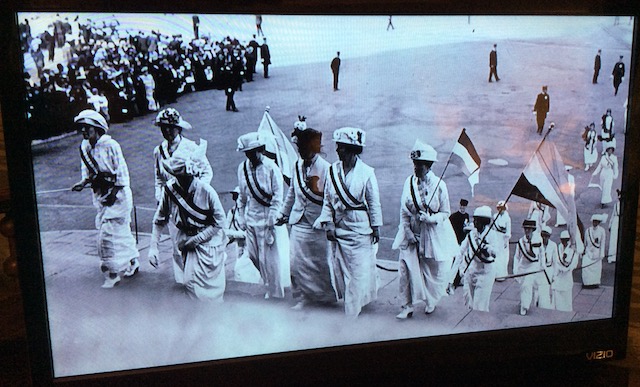
This Vassar graduate with a law degree from NYU had been a popular speaker for suffrage, and would later barnstorm through the west for passage of the 20th Amendment. Sadly, she collapsed from pernicious anemia while on tour in Los Angeles and died despite all medical efforts. She now lies in the Milholland family plot at the Congregational Church in Lewis.
Bed... and breakfast
This delightful evening ended in my expansive suite at the Circle Court Motel, a short walk from the Hancock House.
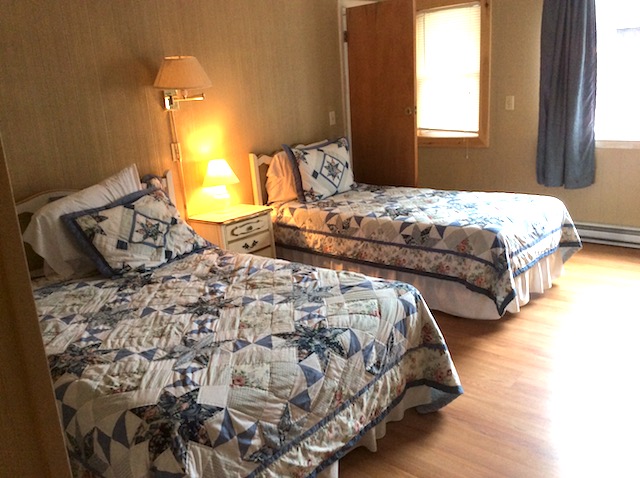
This is perfect for a family trip; multiple sinks in the bathroom area, plenty of chairs and a table for board games in the large living room, and an equipped kitchen. But don't buy too much breakfast stuff, because you will want to visit Hot Biscuit Diner, just across the street the other way.
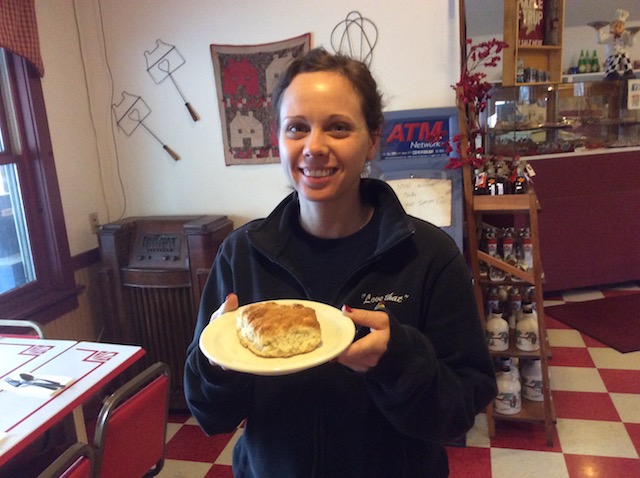
This famous "road food" destination makes a great omelet and fine pancakes for breakfast, but the biscuits are their namesake and claim to fame. Enjoy the classic diner atmosphere and the friendly staff. It makes for a great start.
I find any day to be a great day to go back in time.

